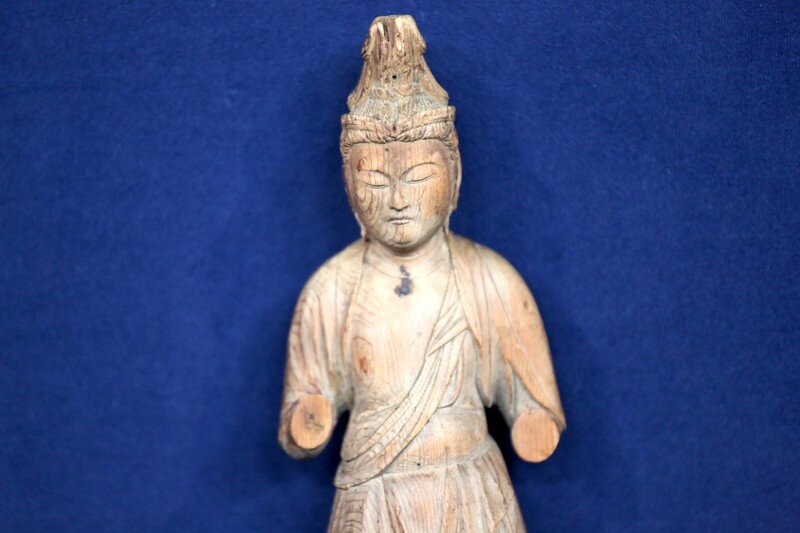Japanese Kannon Figure, ca. 1200
ANTIQUES ROADSHOW APPRAISAL
On this episode of Antiques Roadshow Lark E. Mason appraised a Japanese Kannon Figure, ca. 1200.
APPRAISED VALUE (2016) | $4,000 Auction – $6,000 Auction
This appraisal was featured in Harrisburg, Hour 2 (#2202) and was filmed in Harrisburg, PA on June 03, 2017.
APPRAISAL TRANSCRIPT
APPRAISER:
You walked in with a whole array of things.
GUEST:
Yes.
APPRAISER:
Where did you get them, and what were you expecting to find out?
GUEST:
I purchased them at a thrift store that I go to. I wasn't sure what I had. I just like Asian artifacts and art.
APPRAISER:
And you go to the thrift store often?
GUEST:
I do. I go about twice a week to see what they have, because they get stuff in all the time.
APPRAISER:
What do you think this is?
GUEST:
I didn't know if it's a girl or a boy, but I think it's a girl. It looks like, serene, like maybe Buddha, but I'm not sure. I was just drawn to it, the carvings.
APPRAISER:
You've pointed out some of the features that are important to recognize. One is the serenity of the face. And it's not only just the serenity, but it's the very fine-quality details, which indicates skill on the part of the person that did it. The discoloration you see here is from metal.
GUEST:
Oh, okay.
APPRAISER:
And it's a little hard to see, but right up here at the headdress, there's a hole. And these holes go all the way around the top. And at one time, there was probably a little metal diadem, crown, some sort of extra appendage that was part of this figure, indicating its importance as an object of devotion.
GUEST:
Okay.
APPRAISER:
Now going down from the head, look at the quality of the carving. The body is very subtle. There's kind of a curvature here, and you see the garment that is in these very tight, crisp folds as it falls in a somewhat stylized, but very realistic kind of pattern across the body, clinging to the form of the figure below. Now there's also, on the feet, these blocks. And there's a residue on the blocks indicating that it was set into a base.
GUEST:
Oh, okay. That's what I was wondering.
APPRAISER:
Because it won't stand freely.
GUEST:
Right.
APPRAISER:
And the other thing we can observe about it is the material. This is made of pine. Stylistically, the way the face is done, the robes and so on, correspond to a period of time in China and Japan during the 12th, 13th century.
GUEST:
Oh, my gosh.
APPRAISER:
And into the 14th century.
GUEST:
Oh, my goodness.
APPRAISER:
So roughly around 1200, and maybe even before.
GUEST:
Oh, my goodness.
APPRAISER:
This is Japanese.
GUEST:
Okay.
APPRAISER:
But it exhibits this international style of Buddhist art that was popular at that period of time.
GUEST:
Is it like a Buddha, sort of?
APPRAISER:
It's a figure of Kannon, who represents mercy, compassion. It's a happy figure, something that's good.
GUEST:
(laughing) That's good, that is good.
APPRAISER:
It's an androgynous figure. For something that is of such great antiquity, it's in really good shape. What did you pay for it?
GUEST:
Two dollars.
APPRAISER:
You paid two dollars?
GUEST:
I did.
APPRAISER:
I think it's likely worth between $4,000 and $6,000 at auction.
GUEST:
Oh, my gosh, that's a lot. That's amazing. (giggles) That's amazing. So I did find something! I'm excited. Oh, my gosh. Thank you!

